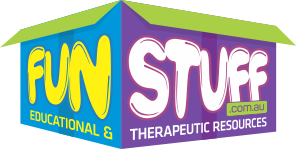What are sensory toys used for?
Sensory toys are specialised tools designed to stimulate the senses, aiding in the development and learning of individuals, especially those with sensory processing disorders. They are an essential part of therapeutic and educational environments.
Understanding sensory toys
Sensory toys are crafted to engage one or more of the five senses: sight, sound, touch, taste, and smell. They come in various forms, such as tactile discs, sound tubes, scented balls, and visually stimulating puzzles. These toys are not just playthings; they are designed to foster skills like motor development, cognitive growth, and emotional regulation.
Benefits of sensory toys
The primary benefit of sensory toys is their ability to provide a tailored sensory experience, which can be particularly helpful for children with sensory processing issues. These toys can:
- Enhance Sensory Processing: By offering a variety of sensory inputs, these toys help children process sensory information more effectively.
- Improve Focus and Concentration: Sensory toys can reduce anxiety and improve focus, particularly in educational settings.
- Develop Motor Skills: Many sensory toys require manipulation, which can help in developing fine and gross motor skills.
- Promote Calmness: For children who experience sensory overload, these toys can provide a calming effect, helping them manage their sensory experiences better.
Types of sensory toys
Sensory toys can be broadly categorised based on the sense they target. For example:
- Visual Toys: Items like liquid timers or spinning tops that captivate with their visual effects.
- Tactile Toys: These include anything from textured balls to soft fabrics that encourage touch and exploration.
- Auditory Toys: Toys that produce sounds or music, aiding auditory development.
Sensory toys for different needs
While sensory toys are beneficial for all children, they are particularly important for those with special needs, such as Autism Spectrum Disorder (ASD) and sensory processing disorders. These toys can be customised to meet individual needs, providing the right level of stimulation or calming effect.
Selecting the right sensory toy
Choosing the right sensory toy depends on the individual's needs and preferences. It's important to consider:
- The sensory area that needs stimulation or calming.
- The age and developmental stage of the individual.
- Safety and durability of the toy.’
Other factors may come into play depending on your child and their specific environment and preferences! For a comprehensive range of toys catering to various needs, browse our collection of sensory toys now. If you have questions or need guidance in selecting the right sensory toy, don’t hesitate to contact us.
Recent Posts
-
Engaging Primary Minds: Exploring Learning Games for Primary School
In the dynamic world of primary education, teachers constantly seek innovative methods to enhance cl …11th Jun 2024 -
How to Teach Social Skills to Children with Autism
Teaching social skills to children with autism is an essential but challenging journey. Social skill …3rd Jun 2024 -
How to Teach Children with Special Needs: Expert Strategies and Tools
Teaching children with special needs presents unique challenges but also extraordinary opportunities …3rd Jun 2024




